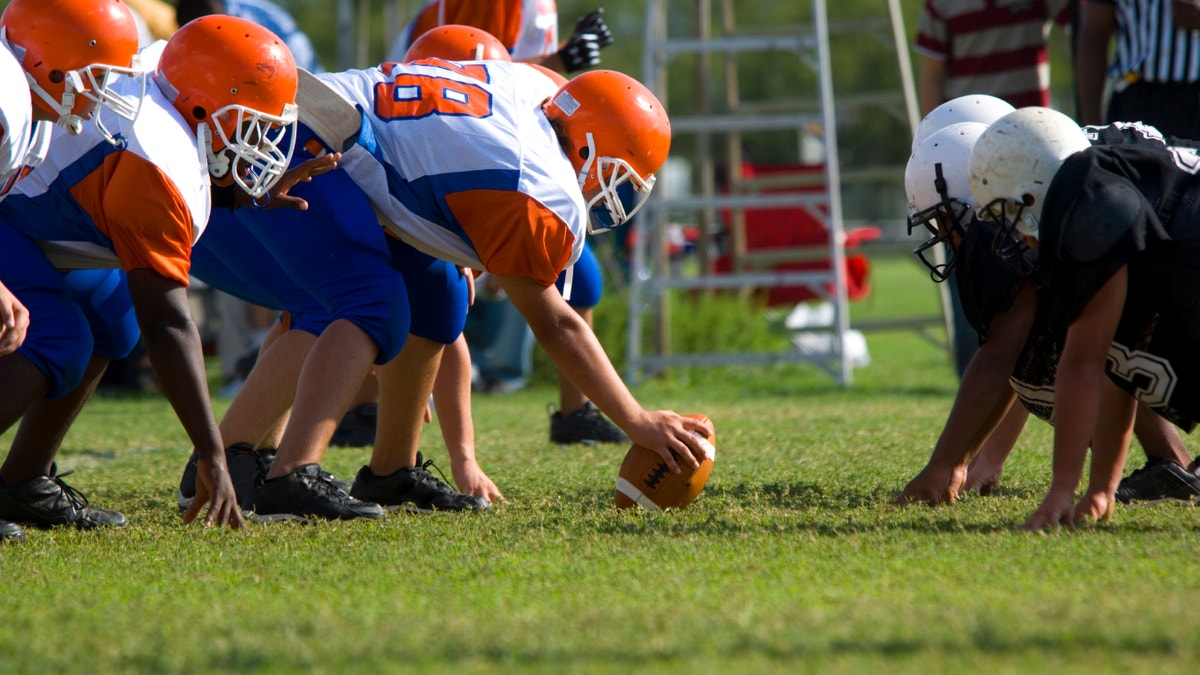
American Football played by young men
Two new data sets suggest youth concussions may be more common than previously thought.
Findings announced Sunday at the American Orthopaedic Society for Sports Medicine found a 60 percent increase in concussion incidence among people ages 5 to 24 from 2007 to 2014. Researchers at the University of California San Francisco Medical Center analyzed administrative health records of more than 8.8 million members belonging to a large private payer insurance group to draw their conclusions. Alan L. Zhang, assistant sports medicine professor in residence, said in a news release that his team’s study was the first to consider concussion diagnosis trends across such a wide age group.
"The rates at which concussions are rising may in part be due to the rise in youth sports participation and also better diagnostic skills/training for coaches and sports medicine professionals,” Zhang said in the release. “This trend is alarming however, and the youth population should definitely be prioritized for ongoing work in concussion diagnosis, education, treatment and prevention.”
Among his team’s findings were that 56 percent of concussions were diagnosed in the emergency room and 29 percent in a physician’s office. The remainder were diagnosed in urgent care or inpatient settings. People ages 15 to 19 were the most likely to have a reported concussion, followed by people ages 10 to 14, 20 to 24, and then 5 to 9.
Regardless of sport, male patients were one and a half times likelier to have a reported concussion.
Separate data drawn from health care insurance claims, from national independent nonprofit FAIR Health, supports the trends outlined by Zhang’s team.
An infographic released Monday from the New York City-based organization details that boys are likelier to have a concussion than girls over age 10, and that high school students are also more at risk for the head injury compared to middle school students. In its analysis of claims from 2007 to 2015, it found that among children and young adults under age 22, reported concussions increased 500 percent between 2010 and 2014.

(Courtesy FAIR Health)
FAIR Health, which is certified by the Centers for Medicare & Medicaid Services (CMS) as a Qualified Entity, has permission to analyze Medicare claims data to promote transparency in health care, according to the nonprofit’s website. Data detailed in the report stemmed from 20 billion privately billed medical and dental health care claims from more than 60 contributors nationwide.
According to the group’s infographic, young people are most likely to suffer a concussion in September and October, which correlate with the start of youth football.
State-mandated reporting rules as well as popularity of sports may impact incidence of concussions, FAIR Health pointed out in its infographic. Pennsylvania, where girls’ field hockey is popular, saw more girls diagnosed with concussions than boys during the study period. Connecticut also had a small gap between girls and boys diagnosed with the head injury. Girls’ ice hockey, lacrosse, field hockey and soccer are popular in that state. Likewise, Florida, California and Texas, where football is most popular, boys had higher incidences of concussions than girls.
Massachusetts, which has some of the strictest concussion reporting laws, had one of the highest incidences of concussions in the infographic, according to FAIR Health.
